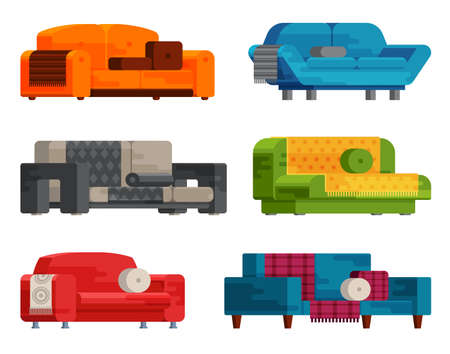Embracing British Architectural Quirks
Walk into almost any traditional British home and you’ll quickly spot some unique architectural features that set these spaces apart from their continental or American counterparts. Alcoves, bay windows, and chimney breasts are among the most recognisable quirks of UK housing design. These elements aren’t just relics of the past—they’re a testament to centuries of evolving tastes, climate considerations, and urban planning. Alcoves, for example, often flank the sides of chimney breasts in living rooms, originally intended to house coal scuttles, shelves, or cabinetry. Bay windows project outwards from the main wall, flooding rooms with precious daylight and offering a cosy perch to watch the world go by. Chimney breasts themselves remain as a focal point long after open fires have been replaced by central heating. These characterful features are so common because they reflect both the architectural history and the functional requirements of British homes—making use of limited space while adding charm and individuality that’s instantly recognisable as “quintessentially British.”
2. Maximising Storage in Alcoves
Alcoves are a defining feature of many British homes, especially those with Victorian or Edwardian heritage. These small recesses, often found flanking chimney breasts, present a unique opportunity to blend style and function in true British fashion. To make the most of these spaces, consider classic joinery techniques—think bespoke cabinetry and open shelving that echo the character of traditional interiors while serving modern storage needs.
Built-In Solutions: Classic Meets Contemporary
The hallmark of effective alcove storage is tailored joinery. Fitted cupboards beneath shelves are a time-honoured solution, ideal for stashing away household essentials while keeping surfaces tidy. For a nod to classic British style, opt for painted wood finishes in heritage tones such as sage green or navy blue, complemented by brass or ceramic knobs.
Display & Storage Ideas for Alcoves
| Solution | Description | Classic British Touch |
|---|---|---|
| Floating Shelves | Create open display space for books or ornaments | Solid oak or painted timber with beaded edges |
| Bespoke Cupboards | Enclosed storage for electronics, games, or linens | Shaker-style doors with period handles |
| Glass-fronted Cabinets | Showcase collections without dust worries | Leaded glass panels or Georgian bars |
Flexible Storage for Every Room
Alcove solutions can be adapted throughout the home. In the lounge, combine shelving for novels and framed photos with cupboards for board games. In bedrooms, fitted wardrobes within alcoves maximise vertical space without encroaching on floor area—a practical strategy in many UK terraces where every inch counts.
Nods to Period Detail
To stay true to the spirit of British interiors, retain or replicate original features like cornices or picture rails when installing new joinery. This respect for tradition ensures your alcove storage not only serves its purpose but also adds to the charm and coherence of your living space.
![]()
3. Innovative Uses for Bay Windows
Bay windows are a quintessential feature in many British homes, prized for their ability to flood interiors with natural light and create an inviting nook. Yet, these charming spaces often go underutilised when it comes to storage. By thoughtfully integrating built-in seating with concealed compartments beneath the seat, homeowners can transform bay window areas into practical yet elegant storage solutions. This approach is particularly effective for stowing away items like books, blankets, or even children’s toys, all while preserving the architectural integrity of the space.
To maintain the period character that defines so many UK properties, it’s essential to select materials and finishes that echo original details. For example, using traditional wood panelling or shaker-style joinery ensures any new additions feel intentional rather than intrusive. Soft furnishings such as bespoke cushions or classic patterned upholstery can further blend the storage bench seamlessly into the existing décor, enhancing both comfort and visual appeal.
For those seeking to maximise every inch, consider incorporating slim shelving or display ledges along the sides of the bay. These can showcase treasured ornaments, vintage teacups, or family photographs without cluttering the main seating area. When planning any alterations, always be mindful of window heights and sill lines; keeping built-in elements below these points helps preserve views and daylight—a hallmark of British bay windows.
Ultimately, by approaching bay window storage with both style and sensitivity, you can enjoy a solution that not only adds function but also celebrates the timeless charm of British interiors.
4. Clever Solutions Around the Chimney Breast
Maximising the space created by chimney breasts is a hallmark of British interior ingenuity. These architectural features, once essential for fireplaces, are now more often repurposed for practical storage without sacrificing style. In countless UK homes, homeowners have turned to bespoke joinery and tailored shelving to make these spaces work harder.
The alcoves formed on either side of a chimney breast are prime real estate for fitted shelves or cabinets. These built-in solutions not only provide much-needed storage but also lend an air of permanence and cohesion to living rooms, bedrooms, and even kitchens. By matching cabinetry to existing skirting boards and coving, you can ensure the new additions feel like part of the original architecture.
Common Storage Options for Chimney Breast Alcoves
| Solution | Typical Use | British Style Note |
|---|---|---|
| Fitted Shelves | Books, decor, plants | Painted in heritage colours or left natural for period homes |
| Cabinets with Doors | Media equipment, board games, children’s toys | Shaker-style doors remain ever-popular across the UK |
| Floating Shelves | Minimalist displays, art, lighting | Ideal for contemporary British interiors seeking clean lines |
Bespoke Joinery Advantages
Bespoke joinery is particularly valued in Britain because it allows homeowners to tailor every inch of space according to their needs—think pull-out drawers for DVDs or adjustable shelving for books of varying heights. If the home is Victorian or Edwardian, retaining original mouldings or using reclaimed timber can help blend new units seamlessly with period features.
Creative Approaches Beyond Storage
A chimney breast needn’t be just about shelving. Some London flats feature integrated seating nooks below windows or discreet home office desks tucked into alcoves. Others use mirrors at the back of shelves to bounce light around typically dim living rooms—a clever trick borrowed from classic British design principles. With a thoughtful approach and attention to detail, chimney breasts become more than relics; they serve as anchors for both function and British style.
5. Blending Style with Function
When it comes to crafting storage solutions within alcoves, bay windows, and around chimney breasts, the British approach is to balance refined style with everyday functionality. Selecting materials is your first step—solid woods like oak or walnut nod to classic British joinery, offering both durability and a timeless feel. For painted finishes, go for muted tones such as sage green, navy, or off-white—these shades complement traditional interiors while feeling fresh enough for contemporary tastes. Consider shaker-style doors or simple panelled fronts; these designs are rooted in British cabinetry tradition but remain versatile for modern use.
Hardware plays its part too. Opt for understated brass or matte black handles and hinges for a subtle yet sophisticated touch that echoes period homes. Don’t shy away from blending in bespoke elements: custom shelving heights, soft-close drawers, and built-in lighting make the most of your chosen spots without compromising on usability. For alcove units flanking a fireplace, symmetry is key—matching bookcases or cupboards help frame the chimney breast elegantly.
Above all, the joinery should feel integrated rather than imposed. Scribing shelves to uneven Victorian walls or adding moulded cornices ensures your storage feels like a considered part of the home’s architecture. By marrying traditional British design cues with practical modern features, you can create alcoves and window seats that are as beautiful as they are functional—a true reflection of British style meeting function.
6. Custom Storage: DIY or Specialist Joinery?
When it comes to integrating storage into alcoves, bay windows, and chimney breasts in British homes, the decision between embarking on a DIY project or enlisting a professional joiner is significant. Each approach offers distinct advantages and considerations that should be weighed carefully against your budget, skillset, and desired finish.
Assessing Your Project Scope
If you’re looking at straightforward shelving or basic cabinetry—particularly for alcoves—a confident DIYer may find this both feasible and rewarding. There’s a wealth of online tutorials tailored to British homes, and materials like MDF or softwood are readily available from local timber merchants and DIY stores such as B&Q or Wickes. However, if your project involves curved bay windows, ornate Victorian detailing, or integrating storage around a chimney breast with awkward angles, specialist joinery is often preferable to achieve a seamless result.
Budget Considerations
DIY is almost always more cost-effective upfront; you’ll save on labour costs but must factor in your own time and potential for error. For smaller budgets, consider flat-pack solutions tailored to fit alcove dimensions. Conversely, professional joiners—often members of the Institute of Carpenters or accredited by FENSA for window work—command higher prices but deliver robust craftsmanship and can match period features using traditional techniques. Be sure to gather several quotes and ask for examples of previous projects similar to yours.
Planning for Success
Before starting any work, map out your objectives: do you need discreet storage for clutter, display shelves for books and curios, or built-in benches beneath bay windows? Measure up meticulously—older British properties are rarely square! Whether DIY or hiring a pro, always allow contingency in your budget for unexpected issues such as hidden pipework or uneven walls. Ultimately, combining British style with functional storage requires thoughtful planning and an honest appraisal of your abilities. If in doubt, consult a local expert; many offer design consultations that can help you make informed decisions while keeping that unique blend of character and practicality intact.

